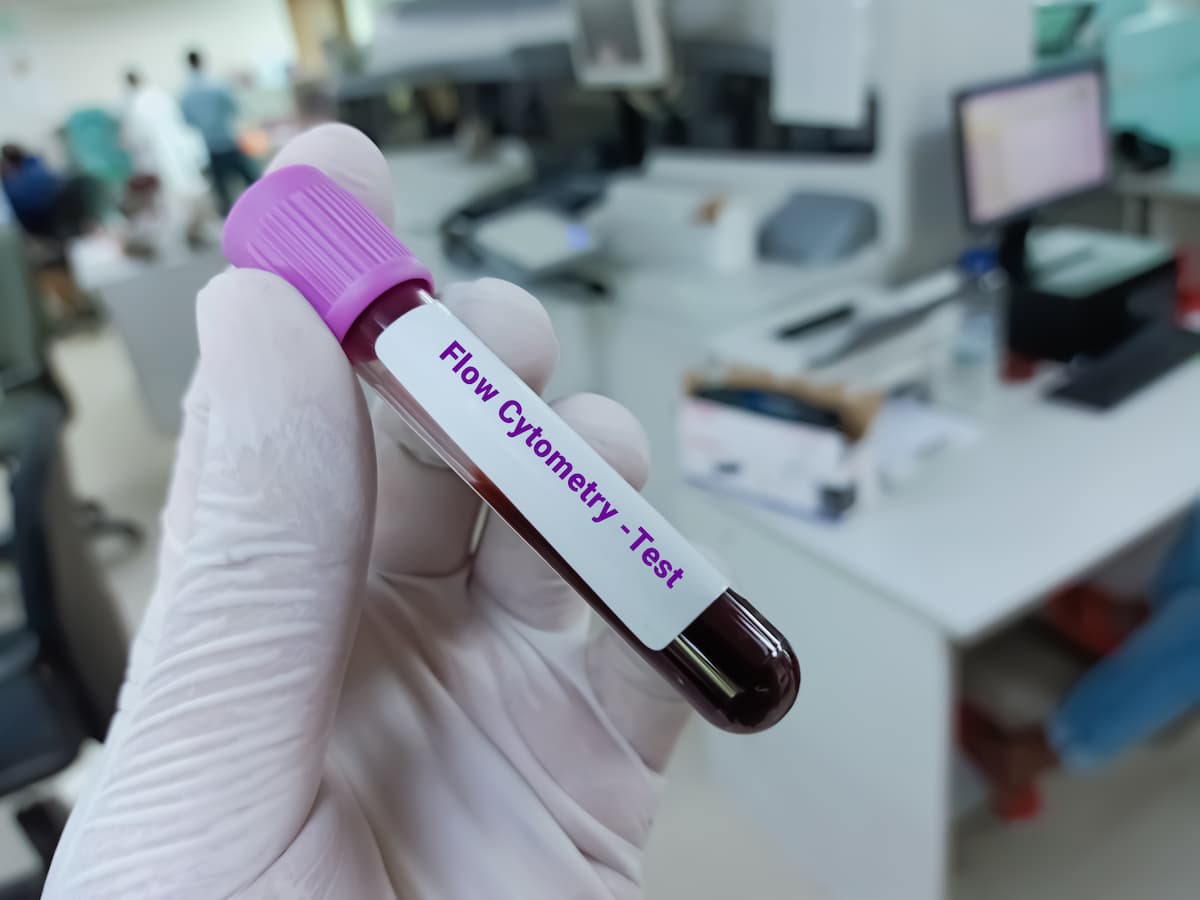- Center on Health Equity & Access
- Clinical
- Health Care Cost
- Health Care Delivery
- Insurance
- Policy
- Technology
- Value-Based Care
Flow Cytometry Can Reliably Identify CTC in Melanoma
The study, which used flow cytometry rather than molecular biology to identify circulating tumor cells (CTCs), found a significant positive correlation between the number of CTCs and the stage of disease.
Circulating tumor cells (CTCs) are a reliable marker of disease progression in melanoma and can reliably be detected using flow cytometry, suggests a small study of patients with the skin disease.
The findings of the proof-of-principle, prospective, longitudinal study were published in Clinical Cytometry. Flow cytometry was able to detect CTC in patients across stages of the disease with high sensitivity and specificity.
While CTCs were identified regardless of disease stage, the current study identified large variations in the presence of CTCs between nonmetastatic and metastatic disease | Image Credit: Innovative Creation - stock.adobe.com

Flow cytometry—commonly used in hematologic cancers—was chosen over more commonly used molecular biology, explained the researchers, because it is more rapid, less expensive, and independent of tumor mutation status. The group highlighted the importance of continuing their research with a larger number of patients and with more longitudinal follow-up to get a clearer picture of the prognostic value of CTCs.
The study included 35 patients, all of whom had at least 1 CTC detected by flow cytometry when they were included in the study at diagnosis prior to treatment initiation. This finding adds to existing data showing CTC presence regardless of melanoma stage.
“Another study looking at the presence of CTCs in the bone marrow also found these cells in 57.4% of melanoma patients, and more specifically in 28.6% of stage I patients, 55.6% of stage II patients, 63.6% of stage III patients, and 65% of stage IV patients (Chernysheva et al., 2019). This further demonstrates that CTCs circulate at all stages of the disease, confirming the aggressive nature of even localized disease,” described the researchers.
The group found no observed correlation between the amount of CTCs following diagnosis and common prognostic factors, such as Breslow thickness, which measures the depth of the melanoma (P = .714), or presence of ulceration (P = .404).
While CTCs were identified regardless of disease stage, the current study identified large variations in the presence of CTCs between non-metastatic and metastatic disease, showing a significant positive correlation between CTC burden and stage of disease. The researchers noted that the majority (69%) of patients in the study had stage 3 or 4 disease, potentially affecting the power of their findings.
The median CTC count was 25 (range, 2-73). CTC counts were 3 times higher among patients with metastatic disease (median, 31; range, 5-73; P < .01) compared with patients with non-metastatic disease (median, 3; range, 2-4) (P < .01). There was no significant difference in CTCs observed between stage 3 (median, 23; range, 2-53) and stage 4 (median, 31; range, 5-73) disease (P = .252).
“These results are consistent with our hypothesis that CTCs may reflect the metastatic process and thus the progression of the disease, and with the results of the literature (Li et al., 2018; Roland et al., 2015) showing a significant correlation between the number of CTCs and the progression of the [American Joint Committee on Cancer] stage,” the researchers wrote.
The 2018 Li et al. study not only showed increasing levels of CTCs with disease progression but also identified CTC count as an independent prognostic factor for inferior overall survival (OS) (hazard ratio, 2.262; P = .012).2
With a short follow-up period in the current study, the researchers were not able to assess the impact of CTCs on outcomes, including relapse, progression-free survival, or OS.
References
- Fourdrain L, Brochet T, Clichet V, et al. Detection of circulating tumor cells is achieved by flow cytometry in melanoma patients. Cytom Part B-Clin Cy. Published online April 15, 2025. doi:10.1002/cyto.b.22236
- Li J, Fu W, Zhang W, Li P. High number of circulating tumor cells predicts poor survival of cutaneous melanoma patients in China. Med Sci Monit. 2018;24:324-331. doi:10.12659/msm.904770
Managed Care Reflections: A Q&A With A. Mark Fendrick, MD, and Michael E. Chernew, PhD
December 2nd 2025To mark the 30th anniversary of The American Journal of Managed Care (AJMC), each issue in 2025 includes a special feature: reflections from a thought leader on what has changed—and what has not—over the past 3 decades and what’s next for managed care. The December issue features a conversation with AJMC Co–Editors in Chief A. Mark Fendrick, MD, director of the Center for Value-Based Insurance Design and a professor at the University of Michigan in Ann Arbor; and Michael E. Chernew, PhD, the Leonard D. Schaeffer Professor of Health Care Policy and the director of the Healthcare Markets and Regulation Lab at Harvard Medical School in Boston, Massachusetts.
Read More
Health Outcomes of Dually Eligible Beneficiaries Under Different Medicare Payment Arrangements
December 1st 2025Within the same physician groups, 2-sided risk in Medicare Advantage (MA) was associated with higher quality and lower utilization for dually eligible beneficiaries compared with fee-for-service MA and traditional Medicare.
Read More
